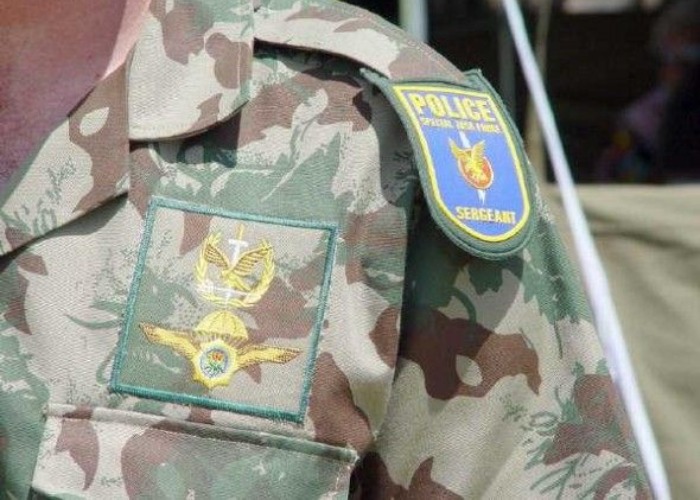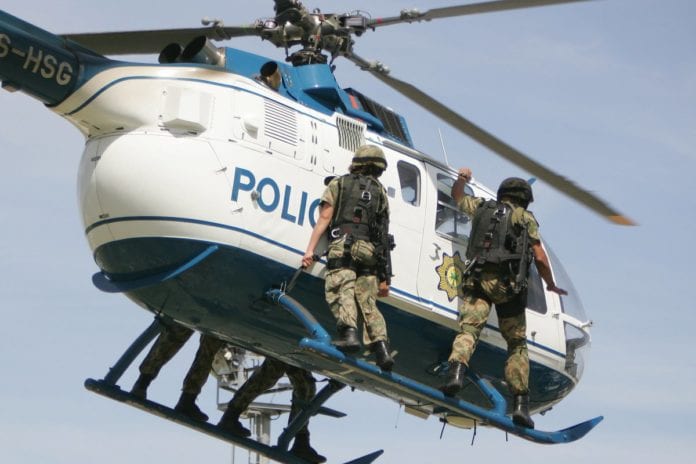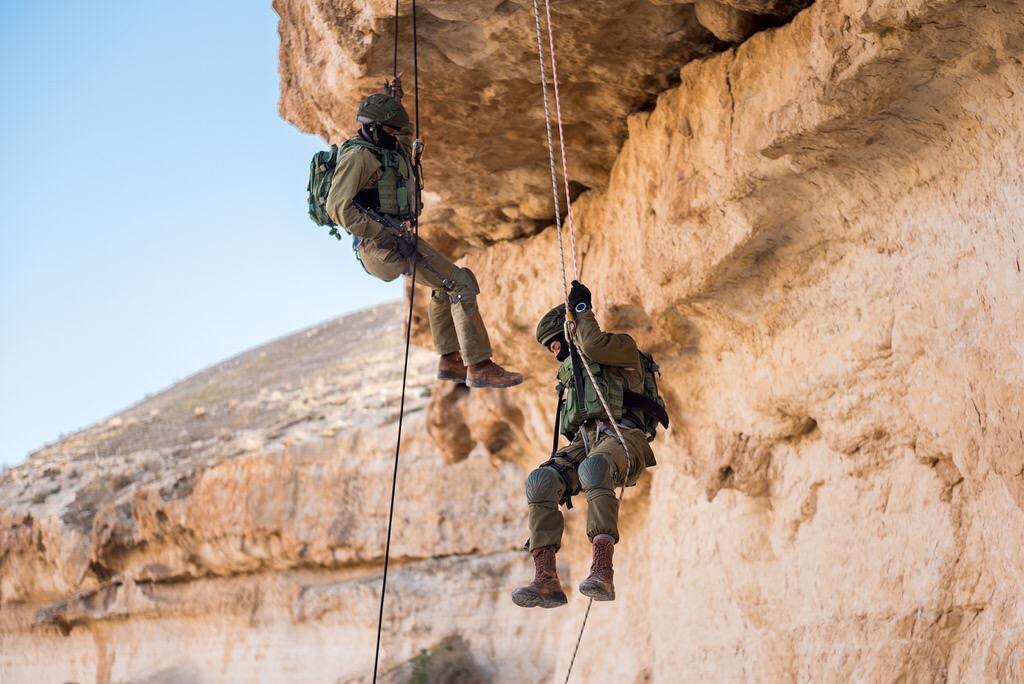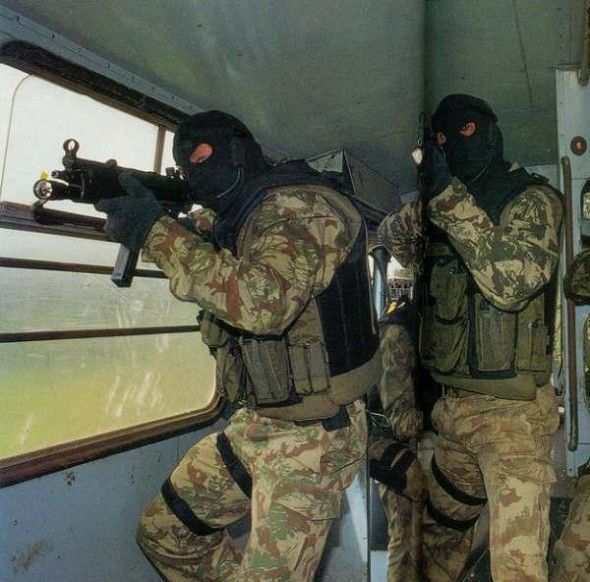The South Africa Police Service (SAPS) Special Task Force is one of the six divisions of the South Africa Police Service. This division was created to have a sect of police officers capable of handling tactical and high-risk situations. Since creating the SAPS Special Task Force, the unit has successfully performed their duties and responsibilities with so much expertise that they have obtained international recognition.
The SAPS STF is also known as ‘Taakies’ and has its stations in Pretoria, Cape Town, and Durban. Although this tactical unit has had some controversies and also faced the verbal lashes of the members of the South African public on account of their abuse of authority, they have, no doubt, played a major role in resolving high-risk situations in and outside South Africa.
SAPS Special Task Force (STF) was Created Out of Necessity
The SAPS Special Task Force is an ingenious unit of the South Africa Police Service. It was formed in 1976 – out of necessity. Following the deaths of many men of the South Africa Police (SAP) who were deployed to assist the Zimbabwean security force in protecting the country (known at the time as Rhodesia) against guerrilla attacks in 1967 due to their lack of expertise and proper equipment, a need for a special police task force was realized by two of the survivors – J.J. de Swardt and Sergeant Roelf de Plooy.

In 1975, the Israeli embassy was held hostage, and once again, the South African police were unable to handle the situation at this point, it was clear to those in authority (not just J.J. de Swardt and Sergeant Roelf de Plooy) that a special task force was a necessity. In 1976, Lt. Gen. Mike Geldenhuys authorized the creation of a Special Task Force, and ‘Bliksems’ was just perfect for that. After creating a structure for the tactical unit, on the 1st of February 1976, the SAPS Special Task Force (STF) was created.
Duties and Responsibility of the SAPS Special Task Force
The duties and responsibilities of the special task force were divided into primary and secondary duties. The primary duties are their core duties and responsibilities which include:
Primary Duties of the SAPS STF
- The Special Task Force (STF) is responsible for handling high-risk cases beyond the control of the South Africa Police Service (SAPS).
- To deal with any hostage situation.
- The STF is responsible for dealing with any dreaded situation in cities and villages.
- To assist the SAPS in a situation where their expertise is required.
- The STF is saddled with the responsibility of assisting any police unit in charge of securing high-profile citizens.
- To perform secure operations.
- To assist neighboring countries whenever they need specialized policing service.
Secondary Duties of the SAPS STF
Training and proffering specialized consultants to the SAPS when necessary.
- Working as a team with the South African crime intelligence division and State Security Agency.
- Assessing specialized equipment.
- Handle any case that is classified as high risk.
Since 1976, the Special Task Force (STF) of the South African Police Service (SAPS) has successfully carried out both their primary and secondary duties and responsibilities.
Some Successes Recorded by the SAPS Special Task Force (STF)
- In 1981, Laingsburg experienced a flood disaster that claimed many lives. A rescue operation was organized and led by the SAPS special task force, and in the space of five days, 25th–30th January, 42 bodies were recovered. They also provided relief to the people in Laingsburg who were affected by the flood.
- In 1993, a woman was held hostage at gunpoint by a man who was a former defense force member at Walmer, Port Elizabeth. All efforts to release her proved abortive until the SAPS special task force came into the building. He was rendered incapable by two gunshots, and the woman was rescued.
- On the 10th of July 1994, 10 tactical unit members were deployed to assist the Organized Crime Unit and Firearm Tracing Unit to trace and intercept the smuggling of arms from Mozambique to South Africa.
- Again, on the 15th of June 1994, a building at Pretoria was on fire, and some of the workers were trapped at the building above the floors that were on fire. 28 members of the SAPS STF joined the SA Air Force, SAPS air wing, on a successful rescue operation. Those who were trapped were rescued from the top of the building by using helicopters and roping equipment.
- On the 6th of August 1995, a man trying to run away from the police ran into the Hollywood Café in Sunnyside and took a woman hostage. Members of the STF were alerted by radio control, and as they have always done, they got to the scene, rescued the hostage, and arrested the man.
In 2012, the SAPS Special Task Force foiled a robbery attempt at the Protea Coin cash compound in Johannesburg, and the heavily armed robbers opened fire on them. In the resulting shoot-out, the STF killed seven and injured nine robbers, but no member of the STF was injured or killed.
- During the funeral of South Africa’s first black president and freedom fighter, Nelson Mandela, in December 2013, over 91 Heads of State visited South Africa all at the same time to pay their final homage. The STF was able to protect the 91 presidents from their arrival to the memorial service and funeral until the day they departed the country.
- On the 10th of December 2016, while eight suspected ATM bombers were on their way to Howick, KwaZulu-Natal Province, the STF stopped their operation. And although there was a massive shootout between the STF and suspected ATM bombers, no SAPS Special Task Force member was injured or killed. Instead, it left all the suspects dead.
SAPS Special Task Force Are High in Demand Within and Outside South Africa
What started as unofficial training with very little equipment has grown into one of the countries most trusted security sources. High-profile citizens and companies in and out of South Africa now demand top-class security from the Special Task Force (STF). However, with all their successes, the tactical police unit has not stopped developing its skills.
In 2010, the squad members were sent to the United States to improve their Crisis Response skills. This tactical unit uses military equipment like machine guns, shotguns, grenades, military aircraft and vehicles, sub-machine guns, night vision, pistols, sniper, and assault rifles to carry out their duties.
There Have Been Controversies and Reports of Bullying in the SAPS STF
Like in every sector of society, there will always be bad eggs who abuse their authority and taint the larger group’s good name. These bad eggs are the reason why members of the general public think the police are against them. Similarly, the SAPS Special Task Force (STF) has played a major role in maintaining peace and order in and out of South Africa, but some bad eggs in the squad try to do just the opposite and thwart their main purpose.
The Marikana Massacre

According to the constable who gave this eyewitness account in 2018, a mineworker hiding behind a rock and begging for his life was summarily executed by a member of the STF at close range with a rifle. Furthermore, he saw the SAPS Special Task Force vehicle fully equipped with what looked like a light machine gun at the top of the roof. They were practically shooting live ammunition on helpless mineworkers intending to kill them. He said witnessing the incident has caused him so much emotional trauma.
What they had done remained a secret, and they were never held accountable for using sophisticated guns on civilians. To make matters worse, the Police minister at the time, Nathi Mthethwa, and the national police commissioner, General Riah Phiyega, praised the police for a job well done, days after the unfortunate massacre.
Reports of Bullying
In 2020, Matiphandile Sotheni, a police officer who was forced out of the tactical team, claimed that the tactical unit’s head didn’t want him as a part of the squad because he was a representative of a union and always questioned things. He claimed that the unit head oppressed him so much that he had to leave the police force and decided to join a private security agency.
These incidents and so many like them have been met with deafening silence by the authorities with hypocritical suspensions handed here and there (for the Marikana Massacre). Others are left to slide with no repercussion whatsoever.


